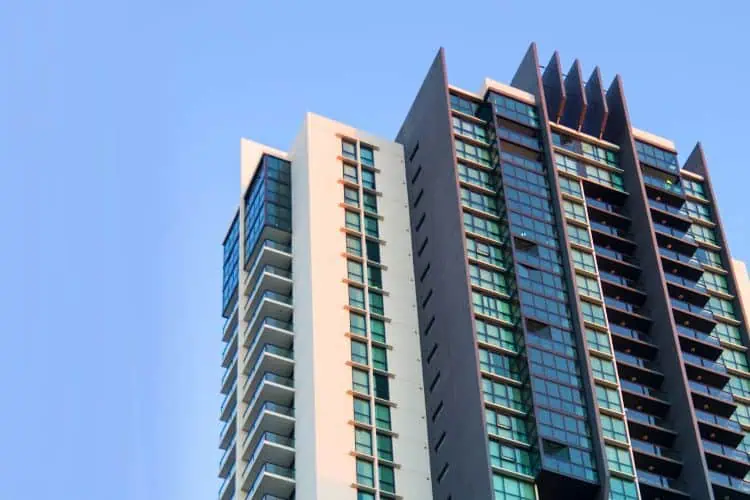As a strata unit owner, you’re likely wondering if you need landlord insurance despite having strata insurance. Here’s one thing you should know: both protection services don’t share similar coverage.
Think of it this way: strata insurance allows you to protect the building’s public premises and recreational facilities. Meanwhile, landlord insurance for strata units goes deeper to safeguard your property.
Stick around to learn more about why you, as a property owner, should consider landlord insurance for your strata unit.
Defining Strata Units
Strata units typically refer to individual units or apartments within a multi-unit residential or commercial building governed by a strata title or plan.
The term “strata” essentially means layers, and in the context of real estate, it refers to the different layers of ownership and responsibility within a building.
In a strata-titled property, each unit owner has ownership of their unit or apartment, as well as a share of the common property. This includes areas like hallways, elevators, parking lots, and recreational facilities.
An Overview of Landlord Insurance
Landlord Insurance is a specialised coverage tailored for—you guessed it!—landlords. This enhanced form of home building insurance goes beyond the standard coverage for risks like storms and fires.
It addresses the unique challenges faced by property owners, offering protection against rent default, loss of rent, and malicious damages caused by tenants.
Besides that, landlord insurance doesn’t account for all scenarios. For instance, if your tenant is reaching the reaching the end of term, you likely won’t receive coverage for vacancy periods.
What Landlord Insurance Covers
Landlord insurance typically covers:

- Building and Contents: Protects the structure of your property (building insurance) and items within (contents insurance). This includes internal fixtures like carpets, curtains, dishwashers, and furniture.
- Loss of Rent Income: If an event makes your property unliveable, coverage includes the loss of rental income during repairs, typically for up to 12 months.
- Public Liability Cover: Addresses medical and legal expenses if someone is injured on your property, offering financial protection against potential liabilities. Interestingly, this is also covered by strata insurance and policy.
- Other Legal Costs: Involves legal representation expenses for scenarios requiring legal escalation, such as tenant eviction.
- Damages Caused by Tenants: Covers both accidental and malicious damages caused by tenants or their guests, with separate inclusions and sub-limits for clarity. Always review the product disclosure statement (PDS) for policy specifics.
Strata Insurance
Strata insurance protects shared or common property within complexes managed by strata, owners’ corporations, or body corporates.
The financial aspect involves a collective effort, with property owners sharing the responsibility for strata insurance premiums. These premiums conveniently fold into the overall strata fees and levies.
It’s worth noting that strata laws and insurance vary from state to state. For instance, in NSW, strata won’t cover paint and wallpaper, and in Queensland, air conditioning units aren’t included.
What Strata Insurance Covers
Strata insurance typically covers the following property aspects:
External Areas Protection
Strata insurance extends coverage to external areas, ensuring the well-being of balconies, communal gardens, and barbecue zones.
Recreation spaces like pools, tennis courts, and garages fall under the protective umbrella.
Notably, even individuals working on-site on behalf of strata are covered, enhancing the overall security.
Building Fixtures and Systems
Essential building fixtures like pipes, hot water systems, and air-conditioners are within the scope of strata insurance.
Common property, ranging from serene gardens to bustling parking lots, also enjoys comprehensive coverage under this policy.
On top of that, shared outdoor furniture and gym equipment receive protection under strata insurance.
Public Liability
You can also get public liability insurance in strata buildings. It provides coverage for legal and financial protection if a third party, such as a visitor or a customer, suffers injury or property damage on your premises.
It helps cover the costs of legal claims, medical expenses, and compensation, reducing the financial impact on your property ownership.
Do You Need Landlord Insurance If Your Property has Strata Insurance?
Residential strata insurance extends its coverage to some areas of your property, encompassing the building, shared property, and common contents. However, the protection afforded by the strata insurance policy ends once you enter your individual property.
Conversely, landlord Insurance assumes a protective role, safeguarding property owners from losses or damages directly associated with tenant activities within their designated premises. Landlord insurance offers more extensive protection from instances like theft as well.
For this reason, you must enrol in both strata and landlord insurance to protect your hard-earned investment.
Limitations of Strata Insurance
While navigating the complexities of strata insurance, it’s crucial to understand its detailed limitations. Here’s what it doesn’t cover.
Belongings Inside Individual Units:

Strata insurance draws a clear line, excluding coverage for personal belongings within individual units. This includes items such as furniture, electronics, jewellery, and other personal possessions.
Non-Permanent Attachments to the Building
While the building structure is covered, non-permanent attachments—like decorations or temporary fixtures—are typically excluded from strata insurance protection.
Internal Fittings
Strata insurance may not extend to cover internal fixtures, lights, or carpets within individual units. These elements fall under the responsibility of the unit owner.
Should You Also Get Content Insurance?
Strata property owners can benefit from a content insurance plan on top of their landlord one. When you take stock of everything within your strata unit – from clothes and jewellery to furniture, white goods, kitchenware, artwork, and computers – the cumulative value is substantial.
The question arises: Can you afford to replace it all in case of unforeseen events?
That’s why content insurance might be a good idea. Nevertheless, this plan might be more beneficial if you’re an owner/occupant rather than a landlord. But, if your property is fully furnished, we highly recommend joining a content insurance plan to protect your belongings.
Final Thoughts
As a strata property owner, landlord insurance is a critical ally. While strata insurance guards shared areas, landlord insurance safeguards your unit’s interior and property.
You’ll find peace of mind in knowing your strata sanctuary is fortified and secure. With landlord insurance, navigate tenant life with confidence, ensuring your property remains protected in every scenario.

